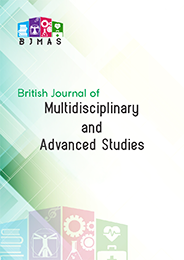Cattle Rustling and Livestock Farmers’ Welfare Status in Katsina State, Nigeria
DOI:
https://doi.org/10.37745/bjmas.2022.0161Abstract
Cattle rustling in recent time have become a socioeconomic menace bedeviling Katsina State. Conscious of its socioeconomic outcome, fruitless efforts were made to tame the tide by government. It was against this background, that the study investigated the phenomenon in Katsina State with a view to situating its causes, and effect on livestock farmers’ welfare status. Descriptive survey design and multi-stage sampling technique were used to generate a sample size of 542 respondents from entire livestock farmers’ population in Katsina State. Structured interview schedule was employed to illicit responses on farmers’ socioeconomic characteristics, involvement; rustled animals other than cattle, benefits, causes, and effect. Results revealed that livestock farmers were middle aged, experienced, males, married with large household size and Quranic educational qualification. Level of Involvement was high just as sheep and goats ranked most rustled animals alongside cattle. Level of benefit was high with manure, food, and income ranking most areas of benefits. Connivance of bandits with locals, extreme poverty, poor education, and politics were crucial causes with high level of effect that resulted to low welfare status. PPMC test of relationship revealed that age, household size, experience, involvement, benefit and effect had significant relationships with livestock farmers’ welfare status. Chi-square test of association revealed livestock farmers’ educational attainment, religion, gender as having significant association with farmers’ welfare status. Livestock farmers’ welfare status was low and a function of spate of rustling that besieged the state. Livestock farmers should initiate a collaborative effort aimed at having alternative livelihood activities.
Downloads
Downloads
Published
Versions
- 19-04-2023 (2)
- 19-04-2023 (1)












